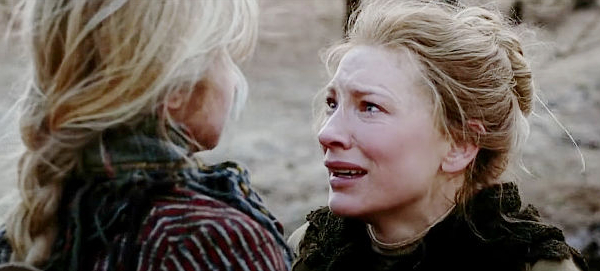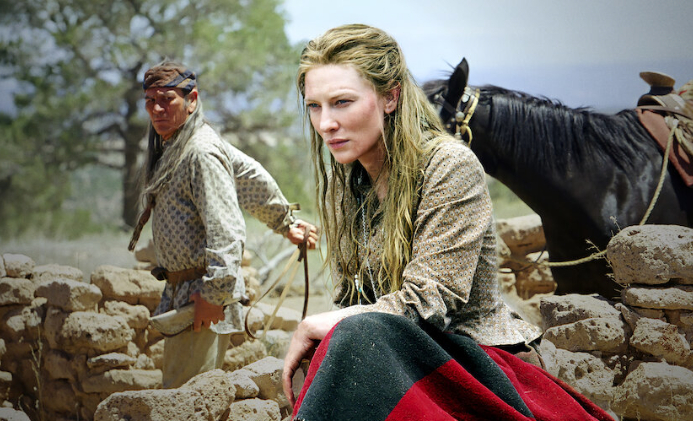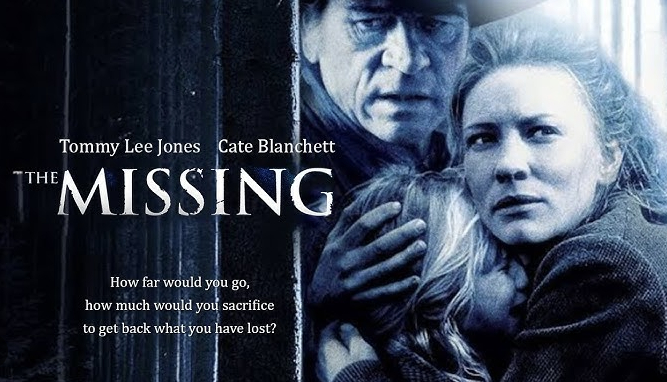The Missing (2003)
The Missing (2003) is a gripping Western thriller that weaves frontier violence with mystical undercurrents and strained familial bonds. Directed by Ron Howard and based on the novel The Last Ride by Thomas Eidson, this haunting tale blends classic genre elements with a dark, emotional journey about motherhood, reconciliation, and resilience.
Plot Overview
Set in the rugged New Mexico Territory in the late 19th century, the film follows Maggie Gilkeson (Cate Blanchett), a strong-willed frontier healer raising her two daughters, Lily and Dot, on an isolated homestead. Her peaceful life is shattered when Lily (Evan Rachel Wood) is kidnapped by a band of Apache renegades led by a mysterious brujo named Chidin (Eric Schweig), who plans to sell young women into slavery across the Mexican border.

With no help from the local authorities, Maggie is forced to turn to the last person she ever wanted to see—her estranged father, Samuel Jones (Tommy Lee Jones), a man who abandoned her years earlier to live among the Apache. Reluctantly, the two set out on a perilous journey through desolate terrain, facing brutal conditions and spiritual horrors, to rescue Lily before she disappears forever.
As they navigate the wilderness, the pursuit becomes not only a mission of rescue but a painful confrontation of the ghosts that divide them. Father and daughter must find a way to reconnect, even as violence, betrayal, and supernatural forces circle closer.
Themes and Emotional Depth
The Missing is not just a Western—it’s a layered exploration of fractured family, cultural conflict, and spiritual reckoning. At its core is the complex relationship between Maggie and her father, shaped by abandonment, anger, and buried pain. Their journey is as much about emotional healing as it is about physical survival.

The film also examines the collision between cultures—white settlers, Native tribes, and the brutal outlaws who exploit both. Yet it avoids one-dimensional portrayals: Maggie’s distrust of her father’s Apache ways contrasts with his spiritual depth and knowledge, suggesting a nuanced view of cultural identity.
The mystical elements, particularly through the villain Chidin and the shamanistic sequences, lend the film an almost mythic weight. Dreams, visions, and spiritual battles elevate the emotional stakes beyond the physical journey, emphasizing the themes of redemption and ancestral reckoning.
Character Development and Performances
Cate Blanchett as Maggie Gilkeson: Blanchett delivers a fierce, grounded performance as a woman hardened by frontier life and scarred by familial betrayal. Her portrayal captures both strength and vulnerability—Maggie is not a damsel, but a protector, a fighter, and a mother who will risk everything. Blanchett gives the role emotional gravity and quiet intensity, anchoring the story through her resilience and pain.
Tommy Lee Jones as Samuel Jones: Jones is magnetic as the weathered, regretful father trying to make amends. His portrayal balances stoic masculinity with spiritual humility. Jones brings depth and sorrow to the role, making Samuel’s path to redemption feel earned rather than forced. His chemistry with Blanchett crackles with tension and unresolved emotion.

Evan Rachel Wood as Lily and Jenna Boyd as Dot: Wood brings heart and fearlessness to Lily, showing both her youthful spirit and her will to survive. Boyd is excellent as Dot, the younger daughter who shows maturity beyond her years. The child actors add emotional stakes to the narrative, reminding viewers what is truly at risk.
Eric Schweig as Chidin: As the antagonist, Schweig is menacing and enigmatic. His character—part mystic, part warlord—is steeped in darkness and myth. Schweig portrays Chidin as more than a villain; he’s an embodiment of spiritual corruption and primal violence, elevating the threat to symbolic levels.
Cinematography and Direction
Ron Howard’s direction in The Missing is both epic and intimate. He captures the stark beauty of the American frontier with sweeping vistas, sun-scorched deserts, and snow-dusted canyons. The natural world is harsh, but also spiritually charged, reflecting the internal turmoil of the characters.
Cinematographer Salvatore Totino uses wide shots to emphasize isolation and vulnerability, while close-ups linger on emotional moments. The film’s pacing is deliberate, drawing viewers into the slow-burning desperation of the journey. The violence, when it comes, is raw and unflinching—never gratuitous, but always impactful.

The score by James Horner is haunting and mournful, mixing traditional Western motifs with Native American influences and spiritual undertones. It underscores the emotional weight of the film while enhancing its mythic tone.
Final Verdict
The Missing (2003) is a haunting, emotional Western that goes far beyond its genre roots. It’s a film about forgiveness, cultural clash, and spiritual reckoning, anchored by powerful performances and an unflinching portrayal of frontier life. Ron Howard crafts a story that is as much about inner demons as it is about physical survival, elevating it to something deeply human and mythologically resonant.
Though the supernatural elements may feel jarring for some, they serve to deepen the film’s exploration of trauma and ancestral legacy. It’s a story of a mother’s unrelenting courage, a father’s pursuit of redemption, and the fragile ties that bind them.
Rating: 8/10
The Missing is a poignant and intense Western with emotional weight, stunning visuals, and unforgettable performances. A must-watch for fans of frontier dramas that explore both the physical and spiritual wilderness.
